- Administrator
- Albums and Singles

Musique Hydromantique is the second solo album by Tomoko Sauvage archiving many years of her performance-based practice on the waterbowls – the natural synthesizer of her invention, composed with porcelain bowls filled with water and amplified via hydrophones (underwater microphones). While her first album Ombrophilia (released on and/OAR in 2009) was studio-recorded /composed work, Musique Hydromantique is about experimentation and improvisation with the environment – acoustics affected by the architecture, temperature, humidity and the human presence.
For more than ten years, Sauvage has been investigating the sound and visual properties of water in different states, as well as those of ceramics, combined with electronics. Water drops, waves and bubbles are some of the elements she has been playing with to generate the fluid timbre. Since around 2010, hydrophonic feedback has been an obsession for the musician – an acoustic phenomenon that requires fine tuning depending on the amount of water, a subtle volume control and interaction with the acoustic space.
"Calligraphy" was recorded in a genuine echo chamber, with about 10 second reverbs, situated in a former textile factory. Like an endless exercise to draw perfect curves and forms floating in the air, the subaquatic feedback frequencies are pitch-bended with the mass of water sculpted by a hand changing its quantity. "Fortune Biscuit" is about the singing bubbles emitted from the pieces of 'biscuit' (porous terra-cotta). Depending on the texture of the surface, each biscuit makes different sound : insect and animal voices in a forest, motors, crying babies changing pitches and rhythms while absorbing the water… "Clepsydra" (meaning "water clock") features Sauvage's classical technique, a random percussion with dripping water. She tunes the waterbowls by adding and removing water, making flowing glissando, to find the balance point in ever-changing tonalities.
Just as the flow of water is subject to a number of variables such as temperature and pressure, water clocks mark a time that is shifting and relative. However, slowness dominates throughout the album as a result of favoring the full resonance of the instrument, leading to a path to experiencing timelessness.
Hydromancy is a method of divination by means of water. Unpredictable bubbles and water ripples become oracles. Evaporation and acoustic space constantly play a chance operation. Through primordial materials and ritualistic yet playful gestures, Musique Hydromantique questions contemporary divination.
All the tracks are live-recorded without electronic effects or editing. They were recorded during the night or very early in the morning and the whole album is to be listened to during that period of a day.
More information can be found here.
Read More
- Administrator
- Albums and Singles

An expanded 2xCD edition of the classic album from Tuxedomoon member Blaine L. Reininger, originally issued by Crepuscule in 1984 and now newly remastered from the original analog tapes.
Night Air was recorded in Brussels in 1983, shortly after Reininger left Tuxedomoon, in collaboration with former Sleepers guitarist Michael Belfer. Other guests include Steven Brown and Winston Tong of Tuxedomoon, and Marc Hollander of Aksak Maboul. The final mix was supervised by Gareth Jones, famed for his work with Depeche Mode, Einsturzende Neubauten and Wire.
The part-instrumental album offers a sequence of bittersweet expatriate vignettes. "I suppose I should be grateful to the capital of Europe for providing the seed around which so much of my spleen could crystallize for so many years," explains Reininger, who hailed from Colorado via San Francisco. "Brussels provided me with such a rich source of melancholic poetry."
The 10 core tracks on Night Air include popular single Mystery and Confusion, as well as Birthday Song (originally performed by Tuxedomoon), the elegiac Ash and Bone, and the exquisite baroque pop of A Café au Lait for Mr XYZPTLK. The 6 bonus tracks on Disc 1 include Windy Outside (a collaboration with Mikel Rouse), The Sea Wall (performed with Durutti Column) and two versions of Crash, written by Reininger and Belfer in 1980 for Tuxedomoon, and subsequently remixed by The Residents.
Disc 2 preserves a previously unreleased live recording from Bologna, Italy, on 19 March 1984. Billed as the Spiny Doughboys Review, the 14 song set includes songs from Night Air and Broken Fingers.
The deluxe 2xCD set is housed in a 6 panel digipack. Cover photography is by Charles Van Hoorick, with liner notes by Reininger, Belfer and Gilles Martin.
Read More
- Administrator
- Albums and Singles
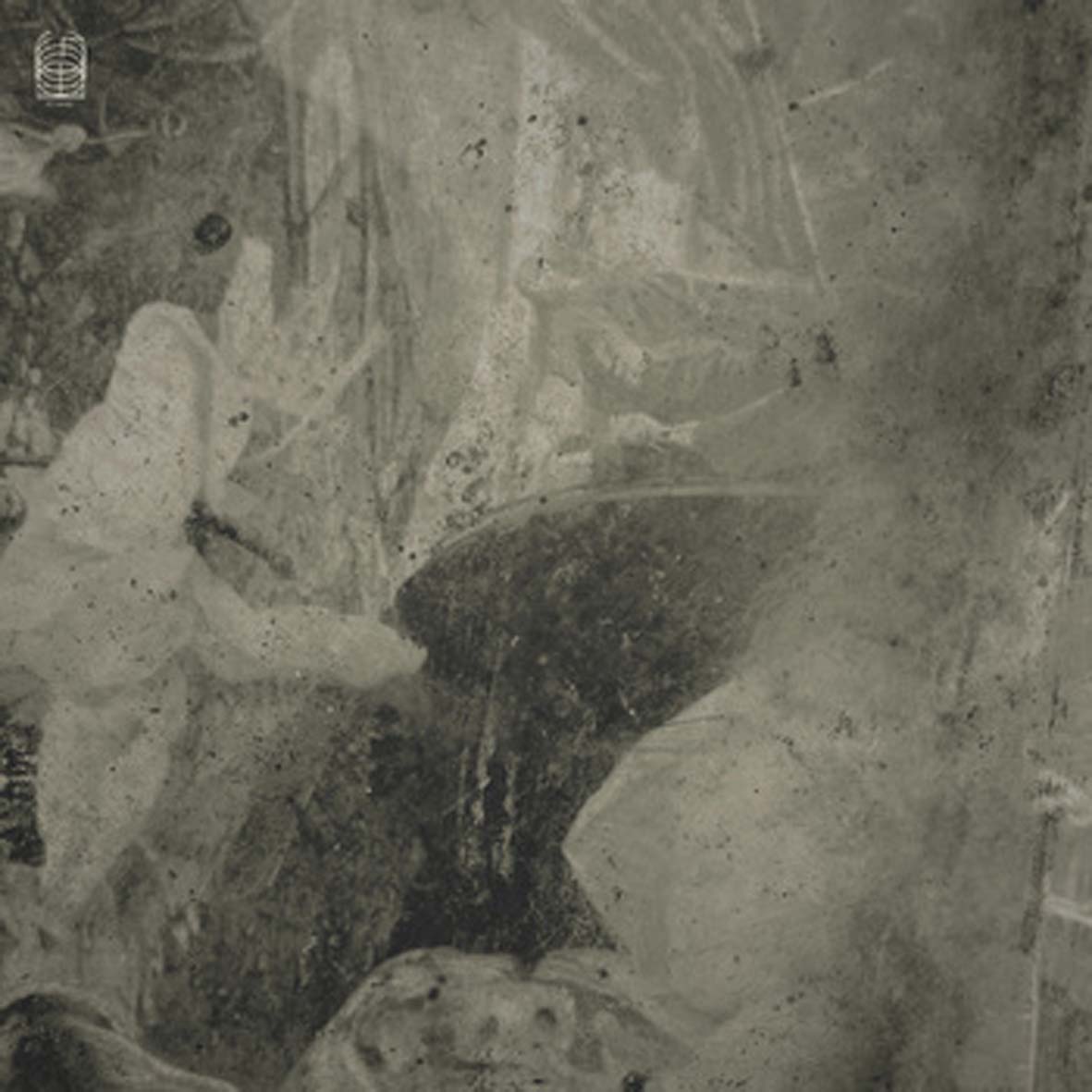 For their latest album, the duo of Andrew Chalk and Timo van Luijk (Af Ursin) take an unexpected detour from their impressive run of limited self-released albums for an appearance on Stephen O'Malley’s eclectic Ideologic Organ imprint. To honor this auspicious occasion, the core line-up is fleshed out with returning collaborators Tom James Scott and Jean Noël Rebilly, as well as pedal steel guitarist Daniel Morris. In all other respects, however, Vieux Silence is every bit a traditional Elodie album, unfolding as a flickering impressionist dream that seems to emanate from a time and place totally unlike our own. As an album, it does not necessarily tower above the rest of Elodie's consistently fine oeuvre, but the title piece might be the single most achingly gorgeous piece that Chalk and van Luijk have recorded together to date.
For their latest album, the duo of Andrew Chalk and Timo van Luijk (Af Ursin) take an unexpected detour from their impressive run of limited self-released albums for an appearance on Stephen O'Malley’s eclectic Ideologic Organ imprint. To honor this auspicious occasion, the core line-up is fleshed out with returning collaborators Tom James Scott and Jean Noël Rebilly, as well as pedal steel guitarist Daniel Morris. In all other respects, however, Vieux Silence is every bit a traditional Elodie album, unfolding as a flickering impressionist dream that seems to emanate from a time and place totally unlike our own. As an album, it does not necessarily tower above the rest of Elodie's consistently fine oeuvre, but the title piece might be the single most achingly gorgeous piece that Chalk and van Luijk have recorded together to date.
As a longtime Andrew Chalk fan, I am hesitant to describe the collaboration of Elodie as greater than the sum of its parts, yet something transcendent undeniably occurs when Chalk and van Luijk get together.To some degree, I can see shades of Chalk's tender and quietly beautiful drone-based aesthetic and hints of Af Ursin's shadowy and chameleonic otherworldliness on Vieux Silence, but it feels like such an uncannily seamless blurring of styles that neither artist seems to be steering the ship.At their best, it feels like this album is a séance and Elodie are channeling some kind of gorgeous and languorous music from the spirit realm.The opening "La Vallée du Sommeil" is a perfect example of such a feat, as its simple and heavenly synth melody seems to vaporously float through a patina of tape hiss like smoke.The best reference point that I can conjure is that it resembles what Angelo Badalamenti would probably sound like if he were suddenly taken by The Spirit and started composing rapturous hymns to God rather than collaborating with David Lynch.In fact, the brief piece ("Corridor") that follows even resembles an organ hymn, though Rebilly's bittersweet, breathy clarinet melodies inject a bit more soul and harmonic complexity than normally found in such fare.That aesthetic of soulful, unhurried, and simple beauty veiled in a thin fog of unreality reaches its apex with the title piece though, which dreamily pulses and weaves an absolutely gorgeous fantasia of warm chords, gently cascading arpeggios, and a repeating snatch of ghostly vocal melody.It kind of sounds like an achingly beautiful, slow-motion waltz enhanced by a haunted Victrola.
Even when they are not at their best, Elodie remain extremely damn good–the only real difference is simply that the illusion dissipates enough to feel like the work of human musicians with specific instruments playing planned compositions.For example, "La Nuit Voillée" is essentially a fluid and haunting pedal steel solo over a shifting bed of gently stuttering, melancholy chords."Au Point du Jour," on the other hand, sounds like some sort of missing link between modern classical and Volcano the Bear, blending a slowly tumbling and rippling minor key piano motif with a surreal backdrop of vocal moans, strange breath-generated textures, and some eerily strangled-sounding bird-like whistles.Later, "Le Temps d'Antan" essentially offers up its negative image: a radiant dawn dispelling all of the previous darkness with a lovely piano melody languorously wending its way through a quiet idyll of lingering reverb, soft breezes, and distant birds.After all of that elegantly blurred beauty and nuance, however, Vieux Silence nearly ends on bit of a perplexing forceful note, as "Entre Deux Mondes" introduces an ominous and cinematic-sounding string theme that feels like it could have come from just about any skilled soundtrack composer.Fortunately, it eventually segues into a wonderfully dreamlike and spectral finale ("La Saison Blanche") which feels like two indistinct, supernatural Theremin-like melodies slowly dancing and intertwining over an unpredictable bed of shifting chords and passing shadows of dissonance.
Unsurprisingly, the best pieces on Vieux Silence ("La Vallée du Sommeil" and "Vieux Silence") are the ones with the most gorgeous melodies, but the true brilliance of this project lies in the less tangible details. The most significant is probably the duo's talent for smoky, elusive-sounding textures, elegantly sidestepping the common peril of turning everything into a soft-focus, reverb-swathed blur.Instead, Elodie somehow make their melodies feel a beautiful half-remembered dream: strong and clear, yet still enigmatically obscured by haze and mist.A crucial corollary to that is Elodie's lightness of touch, a delicate balancing act that separates an achingly beautiful unreality from a mere suite of lovely chamber music.Elodie do not always fall on the right side of that equation here, admittedly, but the results are singularly sublime when they do manage to nail it (and I cannot think of many other artists who could even hit that target once).Less essential, yet still significant is the duo's surreptitious harmonic sophistication, as there are almost always shifting harmonic colors hovering all around the main theme and Chalk and van Luijk are not afraid to bring some fleeting shadow to their languorous heaven with flickers and undercurrents of dissonance.More succinctly put: there are some fine compositions here, but it is the masterful and nuanced execution that makes Vieux Silence something far deeper, more mysterious, more layered, and more movingly fragile than the quiet, warmly lovely melodies would otherwise suggest.
 
Read More
- Administrator
- Albums and Singles
Stelzer/Murray
Connector
Cassette / Digital // HMS045
Release Date: November 17, 2017
https://soundcloud.com/helen-scarsdale/stelzermurray-three
http://www.helenscarsdale.com/published/stelzermurray-connector.htm
Stelzer/Murray is the duo of Brendan Murray and Howard Stelzer, two stalwarts of the Boston noise / experimental scene over the past two decades. Both artists have long been friends and both artists have never shied away from collaborating with avant-garde musicians hither and yon. Yet, this marks their first collaborative work together. Better late than never, we say.
Stelzer brings to the table an array of mangled and partially demagnetized tape; and Murray brings his knack for compacted harmonics, obfuscated field recordings, and long-view compositional strategies. An irradiated, almost Kirlian glow permeates Connector through the duo's slow accretions and erosions amidst the soaring crescendos of compacted tone and vacant shadows of mechanical thrum. On occasion, rasping saw tooth frequencies and oblique synth-noise phrases stridently pop in a clinical opposition against the field of hiss. Screaming cascades from ice storms. Tape symphonies from urban blight. Life-support machines at the point of obsolescence.
In describing the process of building this album, Stelzer reflected, "When you've known someone for this long, the act of collaboration is like conversation over dinner; you don't fuss over it or worry about it; it's stress free, even instinctual like exhaling."
Good things come to those who wait.
Read More
- Administrator
- Albums and Singles
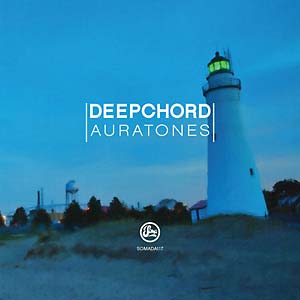
"Deepchord's latest album on Soma, Auratones, sees a return to a more techno sound. A foray into deep, organic, cinematic dance music; subterranean bass, intercepted alien transmissions, and stripped down dance-beats meld with sheets of sounds that roll over the listener like waves lapping up on the shore. Shimmering, watery, brain hemisphere synchronization tones caress and melt stress away. Dancefloor-friendly tracks that work equally well in one's private listening space; immersive music with a distinctive aquatic quality.
Inspired by Detroit and Berlin's dance genres, but tempered by more ambience/atmosphere than one would expect from those genres. Music without harshness or rough edges; Fuzzy, out-of-focus, soft-sounds that slip in and out of the listener's consciousness. Auratones uniquely melds current dance rhythms with lushness and spirituality. Synesthetic sounds that trigger sensory experiences in cognitive pathways other than hearing: smells of perfumes, thoughts of colors, and altered perception of time and space. Psychoacoustic, cerebral, electronic listening music for those wanting a different experience than the current harsher, darker dance trends are offering.
Responsibly made gentle music designed from the ground-up to have a positive effect on the nervous system and leave the listener invigorated and recharged. Chi-building sonic balm. Timeless, exotic dance tracks for a new school of electronic music enthusiasts who are searching for beautiful sounds, crafted with a higher purpose in mind. Recorded during April-June 2016 in Barcelona Spain, then further mixed/processed/assembled in Port Huron Michigan in early 2017."
-via Forced Exposure
More information can be found here.
Read More
- Administrator
- Albums and Singles
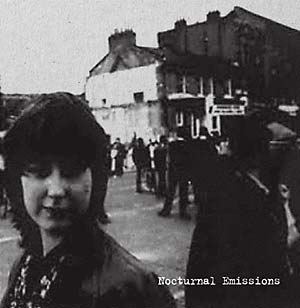
Nocturnal Emissions has been one of the best kept secrets of the industrial genre since the 1970s.
Led by Nigel Ayers, the band was one of the first to use tape cutting, avant-garde art, and underground video works to create a stage experience that was being cultivated by like-mindedartists like Throbbing Gristle and Cabaret Voltaire.
The band moved on to using samplers and electronic noise in their early '80s work, creating a twisted funk sound that would go on to influence everyone from Foetus to Negativland. They still utilized their former tricks, upping the ante with extremist performance art and more professional video displays. The group avoided signing to a major label, instead focusing on releasing their own music more effectively. They followed this path into the '90s when they started Earthly Delights, an incredibly detailed website that promotes their various ideologies (they are strongly against the British monarchy and believe that citizens should have unlimited access to space travel) and constant release schedule. The band has released countless tapes and CDs of their material, and continue to unleash their noise through their website. Nocturnal Emissions is a compilation of classic tracks from the early to mid '80s.
More information can be found here.
Read More
- Administrator
- Albums and Singles

In August this year, Ross Manning opened his first major survey exhibition, Dissonant Rhythms, at Brisbane’s Institute of Modern Art. As part of the exhibition a monograph and LP edition, titled Reflex in Waves, were prepared to celebrate this milestone.
Reflex in Waves brings together a series of sonic approaches Manning has been developing for over a decade. Specifically, Manning’s work is concerned with waves and the impacts of their resulting vibration. Quietly producing audio works out of his studio in Yeronga, on the south side of Brisbane city, Manning's works are based on a series of deeply personal instrument designs, tape manipulation and other exploratory approaches. His instruments, which are often percussive, use harmonically related materials that are activated by motor-driven strings. The resulting sound is a chaotic but pulse-like cluster of harmony.
Developing sets of uniquely pitched materials, Manning's instruments each maintain a distinct quality. No two instruments sound alike and although the way in which they are "performed" may be similar, the resulting sound is anything but familiar.
"I have always been interested in how sound lives in spaces," Ross summarizes. "As I worked on this exhibition, I spent a great deal of time in my studio building instruments and exploring them. I recorded many, many hours of materials in this space and this collection of recordings is very much a summary of my sound practice to this moment."
More information can be found here.
Read More
- Administrator
- Albums and Singles

Synthesizer suites and songs.
Recorded 2016–2017 in Los Angeles.
Moog Source, Korg MS–10, Korg SQ–1, Yamaha SK–10, Sequential Circuits Six–Trak, Modular Synthesizer, delay pedals, manipulated cassette tape, guitar, samples, voice, percussion.
More information can be found here.
Read More
- Administrator
- Albums and Singles
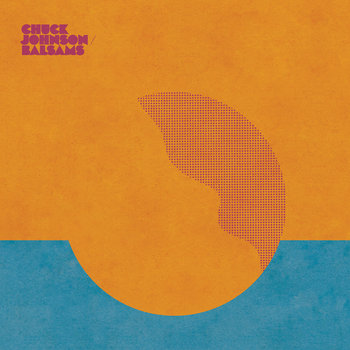
Chuck Johnson's pedal steel guitar debut delivers a group of pieces for ambient meditation. Recorded in a single two-week session during late 2015, and subsequently arranged/constructed/treated in the studio in spring of 2016, Balsams is awash in layers of tonal perfection. The album constantly evolves while maintaining a unified approach across both sides. Balsams is a record that lives outside genre and time, one that continues to develop with each successive deep listen. A unique expansion in the VDSQ catalog, Balsams is an album created in the hopes of providing solace and regenerative energies for many years to come.
More information can be found here.
Read More
- Administrator
- Albums and Singles
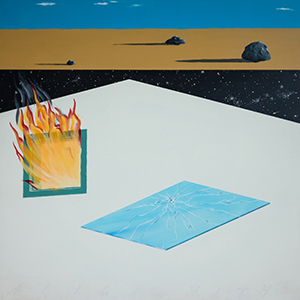 Michael C. Sharp is no stranger to the world of electronic music, being a member of Austin’s psych heavy Sungod. His previous experience, however, has been that of a drummer, which does not at all come through on Never Enough Time. While the five songs on this tape are built largely upon interlocking loops, there is nary a drum sound to be found. Instead it is a rich suite of synth excursions, with a bit of tasteful guitar thrown in for good measure, culminating in an elegant and powerful record.
Michael C. Sharp is no stranger to the world of electronic music, being a member of Austin’s psych heavy Sungod. His previous experience, however, has been that of a drummer, which does not at all come through on Never Enough Time. While the five songs on this tape are built largely upon interlocking loops, there is nary a drum sound to be found. Instead it is a rich suite of synth excursions, with a bit of tasteful guitar thrown in for good measure, culminating in an elegant and powerful record.
Most of the more overtly rhythmic moments come in the form of synthesizer arpeggios and repeating sequences.For "Tape Delay Dichotomy 1" it is initially a pulsating bit of synthesizer that underscores the layered keyboards that later appear.Glistening electronics lead the way, but everything is enshrouded in a pleasant hissy analog haze.In its later moments some echoing percussive bits are introduced, but never does it seem the focus.
On "Pique Pouring Over," sputtering, harsher electronics are the focus, building to a jerky, rhythmic delay that scatters from the overall cavernous mix.Compared to the remainder ofthe tape though, it is far more raw and harsh, making for a nice shadowy alternative to the otherwise polished, gleaming sounds."Never Enough Time", which precedes it, is the perfect antithesis:melodic, sequenced synthesizers, with a complex and layered mix, at times resemble a lullaby with some distinctly prog tendencies.Complex, yet pleasantly sleepy in nature, it is a beautiful song.
The two pieces that bookend the tape, however, are the ones I found to be the strongest."Well-Being" is built from interlocking, pulsating sequences that make for the foundation that Sharp builds upon.Guitar is added on top, a nice and dynamic contrast to the otherwise rhythmic backing track.The two play off of each other well, each one taking the forefront to then retreat throughout.Towards the end the mood shifts a bit darker, and the synthesizers smooth out into more gliding notes, drifting off in a beautiful, tremolo-laden haze.
The concluding "Tape Delay Dichotomy 2" has a more up-front 1980s throwback sound, with echoing, somber keyboards all throughout.Layered, diverse sequences are nicely blended with the dourer synth pads.Again Sharp throws in a bit of guitar, making for a chaotic counterpart to the more motorik electronic sounds and enriching the song very effectively.Eventually the synthesizers build and become the main focus, before swallowing up the entire mix to then fade off in the closing moments.
Michael C. Sharp's first solo excursion is an extremely strong one.I particularly found the subtle use of rhythm an asset, rather than just heavily featuring vintage drum machine beats, resulting in a more unique sound from beginning to end.At times Sharp nudges Never Enough Time toward some new age-y sections, but reins it in before it ever becomes a problem.It is a very well balanced record, with a nice bit of darkness sandwiched within the otherwise glimmering synthesizers, bookended by two complex and diverse pieces.
samples:
 
Read More
- Administrator
- Albums and Singles
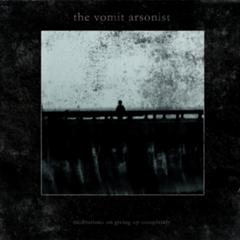 A fitting follow-up to 2015's Only Red, Andy Grant again delivers a strong suite of harsh, aggressive electronics, but with a slightly different mood to it. Anger and frustration still abounds, but it seems to be shaded with a self-aware futility and nihilism that is very fitting and appropriate for the title.
A fitting follow-up to 2015's Only Red, Andy Grant again delivers a strong suite of harsh, aggressive electronics, but with a slightly different mood to it. Anger and frustration still abounds, but it seems to be shaded with a self-aware futility and nihilism that is very fitting and appropriate for the title.
Meditations on Giving Up Completely sticks with Grant's penchant for slow, lugubrious pseudo-rhythms mixed with aggressive electronics and enraged, but heavily processed vocals."What's Left" is a perfect example of this:crunchy, overdriven bursts of noise lead into manic, ridiculously distorted shouting.In some ways it is textbook power electronics, but his use of open space in the mix is extremely effective, making all the harshness hit all the harder, but also giving the sense that Grant’s aggressive delivery is tantamount to an enraged, ranting diatribe delivered to an empty auditorium.
This unconventional inclusion in a well-known approach to noise is a recurring theme throughout the album.Over an especially bleak electronic expanse, Grant introduces an excellent mechanical banging that never relents, soon bringing in his heavily flanged/phased vocals.In this case, however, the volume and dynamics are surprisingly restrained, casting all of this violent aggression in an insignificant, impotent light.The depressive synths and distorted thuds of "There Is Nothing Here" end up feeling similar with its heavy, yet hollow overall sound.
That nihilistic mood to the album does not fully define it though:the dark murk of "It Never Ends" gives the first third a feel somewhere between harsh noise track and unsettling field recordings before he brings in the big, boisterous crashes and vocals, congealing into a wonderfully raw dense wall of sound."When The Last Flame Has Been Extinguished" is a blend of big, thunderous bass thumps and brittle, insect-like buzzing that is soon mixed with feedback and shrill electronics, culminating in a strong blend of low-end rumble and tinnitus squeak.The nearly ten minute closer "Sick Over Trying" is the perfect unfulfilling climax to the album.Surging, but hollow synthesizers and rattling noises lead off, eventually mixed with some tonal dirges to bring the closest thing to melody on this record.Metallically distorted vocals appear at around the half-way mark, and the piece continues on its slow, repetitive lurch until ending flatly.
In a lot of ways, Meditations on Giving Up Completely is the symbolic representation of "if an angry dude is screaming into a distortion pedal but nobody hears it, did it happen?"I think in most cases that would come across as an insult, but that would seem to be the entire point of this album, being seven examples of the banality and futility of macho aggressiveness.Peppered throughout Andy Grant's paean to frustration and nothingness are some really great power electronics moments though, making for a consistent album that is conceptually strong, but is still very powerful divorced from context as well.
samples:
 
Read More

